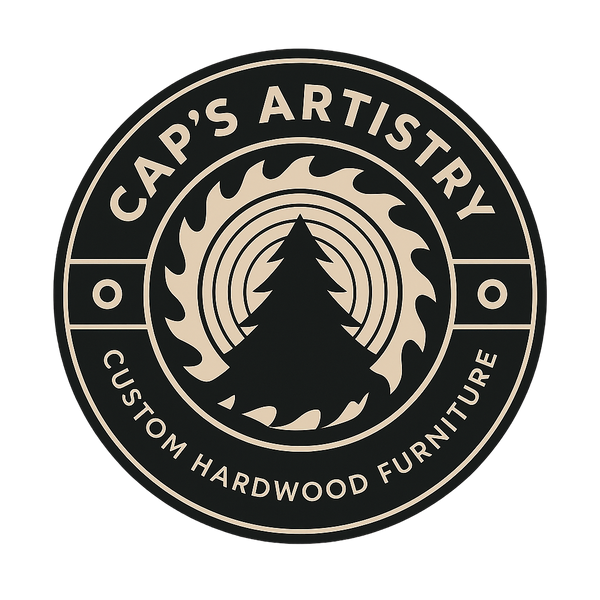When it comes to building hardwood furniture that stands the test of time, it all starts with one critical step: choosing the right wood.
At Cap’s Artistry, we believe that understanding the raw material—from species selection to storage—lays the foundation for every stunning, durable, and functional piece we craft.
Whether you're a fellow craftsman or a curious customer looking to understand what sets quality furniture apart, this blog will walk you through the essentials of selecting the right hardwood and why it matters so much.
1. Choosing the Right Species for the Job
Not all hardwoods are created equal. Different species bring different strengths, appearances, and workability to the table. Here are some of the most common hardwoods we work with:
|
Maple
|
|
|
Ash
|
|
|
White Oak
|
|
|
Cherry
|
|
|
Walnut
|
|
Each wood has its own story, and selecting the right one isn’t just about aesthetics—it’s about matching the function, durability needs, and client vision.
2. Tools of the Trade: Assessing Quality Before You Buy
Picking out hardwood isn’t just a visual process—it’s hands-on and strategic. Before any lumber enters our shop, we evaluate it using specific tools and techniques:
Moisture Meter
- Why It’s Essential: Wood that’s too wet can warp, twist, or crack after building. Ideal moisture content for indoor furniture is 6–8%.
- Tool Tip: Use both pin-style meters and pinless meters (like the Wagner 910) for cross-checking accuracy.
Calipers or Measuring Tapes
- Used to verify consistent thickness and to check if boards are planed evenly.
Kynup Digital Caliper, Measuring Tool, Digital Micrometer Caliper with Stainless Steel
|
STANLEY FATMAX Tape Measure, 25-Foot
|
Flashlight or Raking Light
- Held at an angle, this helps highlight surface defects, tear-outs, or hidden cracks in figured woods.
Streamlight 66320 MacroStream USB 500-Lumen 2000 Candela Rechargeable EDC Compact LED Flashlight
|
Working Light Portable, Rechargeable Work Lights with Magnetic Base Hanging Hook
|
Your Fingertips & Ears
- A quick knock on the board can reveal voids or hollow sections. The texture also tells a lot about grain tear, rough planing, or case-hardening issues.
The goal is to never assume a board is good just because it looks flat or pretty on the top surface.
3. Environment Matters: The Role of Storage and Airflow
Even premium hardwood can become problematic if it’s not stored properly. That’s why we treat our lumber like the investment it is.
Air-Drying and Kiln-Drying
- Wood is often air-dried first, then kiln-dried to reach optimal moisture. We never rush this step. Slabs that are 2" thick typically need at least a year of air-drying before finishing in a kiln.
Stacking and Stickering
- Boards must be stickered (separated by spacers) to allow air to circulate evenly. Improper stacking can lead to cupping, bowing, or mold growth.
Shop Climate
- Inside a shop, temperature and humidity should be monitored. Even after kiln-drying, wood can reabsorb moisture from a damp or poorly ventilated space.
Proper wood storage protects the integrity of every board until it's ready for the saw.
Final Thoughts: It Starts Before the First Cut
Choosing the right hardwood means more than just picking a pretty grain. It’s a deliberate process of matching species to purpose, inspecting raw material for integrity, and protecting it until it’s transformed into a piece of functional art.
At Cap’s Artistry, every board has a story. And we honor that story by starting with mindful selection, deep knowledge, and respect for the craft. If you’re thinking about a custom project, know that what you don’t see—the wood’s journey before it's shaped—is just as important as the final piece that enters your home.













